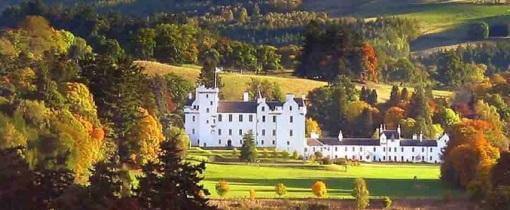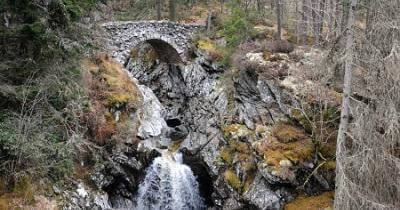
Clan Donnachaidh Society, of the Mid-Atlantic
Clan Donnachaidh (Children of Duncan) - Duncan, Reid, Robertson and Septs of those Clans
Clan Donnachaidh Society
Membership in the Society shall be open to Clansmen and Clanswomen bearing the names of Duncan and Robertson, and the names of the accepted Septs of the Clan, namely:- Duncanson, MacConachie, MacDonachie, Donachie, Dunnachie, Tonnachy, MacRobert, Collier, Colyear, Inches, Reid, Roy, Roberts, Macinroy, MacIvor, Maclagan, Stark, MacRobie or variations in the spelling of these names, and others who claim to be of the Clan.
Ladies bearing the name, either by Parentage or Marriage, and all lineal descendants in the female line, whether male or female, and Husbands of Lady Members may become Members also.


Virtutis Gloria Merces
The Clan Motto translates to 'Glory is the reward of valour'.
Garg 'nuair dhùisgear
The Clan slogan means 'Fierce when roused'.
Branch Officers Contact Details
Send Mail to all Officers

Sam Kistler
President
3642 Franklinville Rd.
New Windsor, MD 21776-8012

Tom Due
Vice President

Norman Dunkinson
Secretary/Treasurer
19354 Barrens Rd. S.
Stewartstown, PA 17363
Robertson’s Rant
Newsletters from the Mid-Atlantic Branch of the Clan Donnachaidh Society.
Upcoming Celtic Events and Games
*Clan Tent at Games marked with an (*) asterisk
| Date | Event Name | Location |
|---|---|---|
| May 18th | Colonial Highland Gathering | Fair Hill, MD |
| Jun 1st | Garrett County Celtic Festival | Friendsville, MD |
| Jun 8th | Carroll County Celtic Festival | Westminster, MD |
| Jun 15th | Wild & Wonderful Celtic Festival | Beverly, WV |
| Jun 22nd-23rd | Celtic Fling & Highland Games | Manheim, PA |
| Aug 31st-Sept 1st | Virginia Scottish Games & Festival | The Plains, VA |
| Sep 7th | Edinboro Highland Games & Scottish Festival | Edinboro, PA |
| Sep 7th | Covenanter Scottish Festival | Quarryville, PA |
| Sep 14th | Ligonier Highland Festival | Ligonier, PA |
Clan Donnachaidh Major Clans and Septs
Collier
Colyear
Connochie
Conochie
Cunnison
Dobbie
Dobbin
Dobie
Dobieson
Dobinson
Dobson
Donachie
Donachy
Duncan
Duncanson
Dunnachie
Hobson
Inches
Kynoch
MacConachie
MacConchie
MacConechy
MacConich
MacConnochie
MacCullich
MacDonachie
MacGlashan
MacInroy
MacIver
MacIvor
MacJames
MacLagan
MacOnachie
MacRobbie
MacRobert
MacRoberts
MacRobie
MacWilliam
Read
Reed
Reid
Robbie
Roberts
Robertson
Robinson
Robison
Robson
Roy
Stark
Tonnochy
Useful Website Links
The Clan Society and Branches
The Clan Donnachaidh website has been created to keep members and friends around the world informed about Clan programs, events and items of general interest.
A Guide to Scottish Tartans (suggested by Cora Miller)
Tartan kilts are one of the first things that come to mind when people think of Scotland. These iconic patterns and skirt-like fashions have influenced clothing all over the world.
1st Marquis of Montrose Society
The 1st Marquis of Montrose Society was formed in 1995 and was the inspiration of Alan Macpherson Yr. of Cluny. A passionate and informative follower of Montrose for many years Alan recognised that, despite being one of Scotland's most noble and militarily gifted leaders, the fascinating exploits of James Graham the 1st Marquis.
Visit The Heraldry Society of Scotland Online
The Heraldry Society of Scotland was founded in 1977 with the objective of promoting the study of heraldry and encouraging its correct use in Scotland and Overseas. The Society encourages people to join whether they have their own arms, intend to procure arms, or have a general interest in Scottish Heraldry.
Clan Donnachaidh DNA Research
Undoubtedly the most important project created during the past few years is the Clan Donnachaidh DNA Surname Project. Everyone at some time or another has wondered about his or her origins, but until recently family history research relied on oral tradition and written records, both usually in short supply.
Clan Donnachaidh DNA Research Results
Visit our project website for much more information on the Donnachaidh DNA Project. The Clan Donnachaidh DNA Project invites people of Scottish, Irish, and English heritage, worldwide, who bear the surnames of our Clan (Donachie, Duncan, Robertson, Reid, McConnachie) or any of the septs of.
The Donnachaidh Surname Project
Robertson, Reid, Duncan, Donachie, Donnachie, McConnachie, Stark, Dobbins and 44 other are among the list of Clan Donnachaidh surnames. Donnachaidh (Donachad) translates from the Gaelic as 'Children of Duncan'. For the full history of Clan Donnachaidh visit us at our project website. All participants will be included in the ongoing studies and by joining the project.
History and Use of Bagpipes in Theater & Dance
Known for their unique and distinctive sound, bagpipes are identified with European cultures such as those of Ireland and Scotland, but the true origin of the instrument remains unknown. Some historians believe the instrument dates back to the first century B.C.
Clan Donnachaidh Societies in the United States of America
Arizona | Carolinas | Florida | Gulf Coast | Mid-South | Mid-West | New Mexico | Northeast | Northern California | Pacific Northwest | Rocky Mountains | Southern California | Texas | Upper Mid-West
